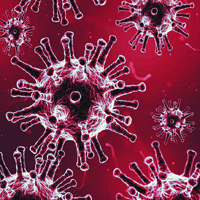 Smart Citations
Smart CitationsSee how this article has been cited at scite.ai
scite shows how a scientific paper has been cited by providing the context of the citation, a classification describing whether it supports, mentions, or contrasts the cited claim, and a label indicating in which section the citation was made.
Proarrhythmia assessment in treatment with hydroxychloroquine and azithromycin hospitalized elderly COVID-19 patients - our experience
The aim of our study was to characterize the repolarization disorders propensity induced by drug-drug interaction. In this observational retrospective study, we report our experience on all elderly patients with ascertained diagnosis of coronavirus disease 2019 through nasopharyngeal swab with real time-polymerase chain reaction at our Pugliese-Ciaccio hospital in Catanzaro, who received hydroxychloroquine (HCQ), with or without azithromycin (AZY). 33 hospitalized patients were examined. We calculated QT value, cQT, QT dispersion, and cQT dispersion and examined possible progression on the basal electrocardiogram (T0) and after the insertion of the drug (T1). The QT value is increased by T0 vs T1 (370±40.74 vs 420±36.91 ms; P=0.000), as well as the cQT value (408±25.40 vs 451.54±58.81; P=0.003), the QT dispersion (QTd: 36.36±14.53 vs 50.90±13.12 ms; P=0.000); the dispersion of cQTc (cQTd 46.27±18.72 vs 63.18±21.93 ms; P=0.001). The ΔQT was 37.44±44.09 while the ΔcQT was 32.01±56.47). The main determinant of QTc prolongation is the number of drug at risk of prolongation of the QT that could influence the ventricular repolarization phase. The use of HCQ in combination with AZY, in patients suffering from severe acute respiratory syndrome-related coronavirus-2, can favor the onset of serious side effects, even potentially fatal. Finally, the measures of QTd and cQTd confirmed additional electrocardiographic parameters useful in identifying patients being treated with drugs at risk of potential adverse arrhythmic events following drug interaction.
How to Cite
PAGEPress has chosen to apply the Creative Commons Attribution NonCommercial 4.0 International License (CC BY-NC 4.0) to all manuscripts to be published.

 https://doi.org/10.4081/gc.2021.9536
https://doi.org/10.4081/gc.2021.9536





